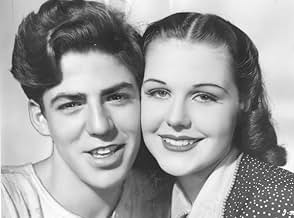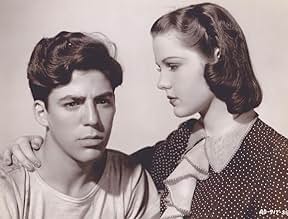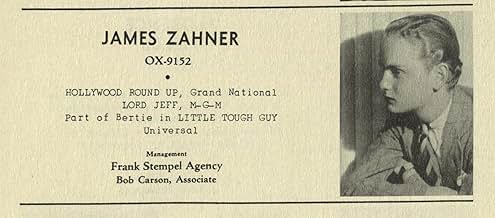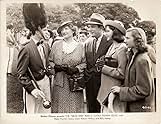अपनी भाषा में प्लॉट जोड़ेंAfter his father is sentenced to death for accidentally killing a cop, Johnny's family is left to fight for survival. His sister becomes a burlesque performer for money while Johnny joins a ... सभी पढ़ेंAfter his father is sentenced to death for accidentally killing a cop, Johnny's family is left to fight for survival. His sister becomes a burlesque performer for money while Johnny joins a local gang and turns to a life of street crime.After his father is sentenced to death for accidentally killing a cop, Johnny's family is left to fight for survival. His sister becomes a burlesque performer for money while Johnny joins a local gang and turns to a life of street crime.
- पुरस्कार
- कुल 2 जीत
Edward Pawley
- Jim Boylan
- (as Ed Pawley)
Hal E. Chester
- Dopey
- (as Hally Chester)
Victor Adams
- Secretary
- (बिना क्रेडिट के)
Edward Arnold Jr.
- Fat
- (बिना क्रेडिट के)
Hooper Atchley
- Mr. Randall
- (बिना क्रेडिट के)
फ़ीचर्ड समीक्षाएं
In their third team appearance, "The 'Dead End' Kids" are: Billy Halop (as Johnny Boylan), Huntz Hall (as "Pig"), Gabriel Dell (as "String"), Bernard Punsly (as "Ape"), Hal E. "Hally" Chester (as "Dopey"), and David Gorcey (as "Sniper"). After this film, Universal Pictures, the third of several studios to cash in on the Kids' popularity, adopted "Little Tough Guys" as a series co-title; possibly, in case United Artists or Warner Brothers legally challenged their use of "Dead End Kids". In this film "Little Tough Guy" refers to Mr. Halop only, the leader of the pack.
Universal was only able to obtain four original "Dead Enders" for their first outing; so, substituting for Bobby Jordan and Leo Gorcey, and making their first appearances as members of the expanding "Bowery" team, are "Hally" Chester and David Gorcey (Leo's brother). Both would continue with the group. Brat packer Jackie Searl (as Cyril Gerrard), who not only joins, but also takes over as "Little Tough Guys" leader, would only make a couple of peripheral reappearances. Herein, his snobbishness balances the grim and gritty quite nicely.
Although you wouldn't expect it, this is one of the best "little" films in the whole "Dead End-East Side-Bowery Kid" cache. The plot is fairly typical, but handled well - Halop's teen angst turns to anger after his father is wrongly arrested, for killing a policeman. Following a miscarriage of justice, Halop soothes his sorrows by descending into a "Dead End" lifestyle. Halop has a firm grasp of this material, and performs the melodrama with his usual expertise.
Another cast member tuning in an excellent performance is matronly Marjorie Main (as Mrs. Boylan). A keen actress, Ms. Main gives her "mother" character an almost unseemly underbelly. Note how Main's "theatrics" fit perfectly with the lines her children address her with: daughter Helen Parish (as Kay Boylan) says, "Oh Mom, quit acting," and Halop tells Main, "Gee, Ma, you look just like a movie star." So, Main plays her part as a failed movie star, lamenting her age and poverty.
The 1930s New York City interior and exterior sets are terrific. Halop says, "I gotta keep moving," and director Harold Young fills the running time with a lot of movement - there are people everywhere. Both Young and photographer Elwood Bredell excel. Ms. Parrish and Robert Wilcox (as Paul Wilson) are sweet, in the "romantic" adult roles. There are a myriad of extras, with Richard Selzer (as Bud) among the "worst dressed" background kids - later, Mr. Selzer became the "Top 10" fashion conscious "Mr. Blackwell".
******** Little Tough Guy (7/22/38) Harold Young ~ Billy Halop, Jackie Searl, Marjorie Main
Universal was only able to obtain four original "Dead Enders" for their first outing; so, substituting for Bobby Jordan and Leo Gorcey, and making their first appearances as members of the expanding "Bowery" team, are "Hally" Chester and David Gorcey (Leo's brother). Both would continue with the group. Brat packer Jackie Searl (as Cyril Gerrard), who not only joins, but also takes over as "Little Tough Guys" leader, would only make a couple of peripheral reappearances. Herein, his snobbishness balances the grim and gritty quite nicely.
Although you wouldn't expect it, this is one of the best "little" films in the whole "Dead End-East Side-Bowery Kid" cache. The plot is fairly typical, but handled well - Halop's teen angst turns to anger after his father is wrongly arrested, for killing a policeman. Following a miscarriage of justice, Halop soothes his sorrows by descending into a "Dead End" lifestyle. Halop has a firm grasp of this material, and performs the melodrama with his usual expertise.
Another cast member tuning in an excellent performance is matronly Marjorie Main (as Mrs. Boylan). A keen actress, Ms. Main gives her "mother" character an almost unseemly underbelly. Note how Main's "theatrics" fit perfectly with the lines her children address her with: daughter Helen Parish (as Kay Boylan) says, "Oh Mom, quit acting," and Halop tells Main, "Gee, Ma, you look just like a movie star." So, Main plays her part as a failed movie star, lamenting her age and poverty.
The 1930s New York City interior and exterior sets are terrific. Halop says, "I gotta keep moving," and director Harold Young fills the running time with a lot of movement - there are people everywhere. Both Young and photographer Elwood Bredell excel. Ms. Parrish and Robert Wilcox (as Paul Wilson) are sweet, in the "romantic" adult roles. There are a myriad of extras, with Richard Selzer (as Bud) among the "worst dressed" background kids - later, Mr. Selzer became the "Top 10" fashion conscious "Mr. Blackwell".
******** Little Tough Guy (7/22/38) Harold Young ~ Billy Halop, Jackie Searl, Marjorie Main
Having been a fan of the Bowery Boys/East Side Kids, I eagerly grabbed this movie, expecting to see the wildly madcap misadventures of Mugs, Glimpy and the rest of the East Side Kids, boys whose misadventures stemmed from their being naughty, though not altogether bad, along with the local cops who tended to feel that the East Side Kids were a far bigger threat and who belonged behind bars. As a rule, the East Side Kids, in a race against time, with the law hot on their trails usually wound up making good and coming out the heroes in the end, by using their street smarts and their smart alack attitude. This was the general formula of the movies starring the East Side Kids. The East Side Kids were truly the kings of the B-grade movies.
With this in mind, I was at first disappointed in this movie. It was a grim and somewhat tragic story of a gang of boys stuck on the wrong side of the tracks and who, through circumstances beyond their control, wound up on the wrong side of the law, turning to crime.
Through it all, some of the character traits that would shine bright in their later movies, was apparent. There were some comic moments in this movie, though too few and far between in this movie.
In spite of my disappointment, this movie is one movie that I can watch over and over again.
A point of interest to the technical-minded viewer who loves to look for detail, the record changer in Cyril's house is a Capehart, one of the high end record changers at that time. And in the 1930s, this model cost more than the price of a new car!
With this in mind, I was at first disappointed in this movie. It was a grim and somewhat tragic story of a gang of boys stuck on the wrong side of the tracks and who, through circumstances beyond their control, wound up on the wrong side of the law, turning to crime.
Through it all, some of the character traits that would shine bright in their later movies, was apparent. There were some comic moments in this movie, though too few and far between in this movie.
In spite of my disappointment, this movie is one movie that I can watch over and over again.
A point of interest to the technical-minded viewer who loves to look for detail, the record changer in Cyril's house is a Capehart, one of the high end record changers at that time. And in the 1930s, this model cost more than the price of a new car!
The weakest and least known of all the film series spawned from the "Dead End" Kids were those made by Universal. These Universal films which were cranked out between 1938 and 1943, overlapped the concurrent "Dead End" Kids at Warner Bros (1938-1939), and The East Side Kids films (1940-1945) at Monogram. LITTLE TOUGH GUY was the first of Universals contribution to the series. This first entry is only passable. The first half is poorly directed and many elements are hard to take. The second half, when the kids go on a wild crime spree comes off better. Of interest to fans of the series is seeing Huntz Hall, in a departure from playing his usual dumbbell role, plays a real tough guy in this one. This was also David Gorceys first appearance in the series. His more famous brother Leo was not in this one (nor any of the subsequent Universal entries). Hally Chester also makes him debut as a gang member in this one (he previously had a bit part in CRIME SCHOOL.)
This film is one of the earliest incarnations of The Dead End Kids--a group of lovable tough teens who were first introduced in the play "Dead End" and who appeared in several films for Warner Brothers AND Universal. The Warner films were more popular (as well as better) and included "Dead End" (the movie version of the play) and "Crime School". As for Universal, they hired some of these boys away from Warner for a few films and serials. Not only the composition of the Dead End Kids changed over the years but so did their name--being renamed 'The Little Toughguys' (for Universal), then The East Side Kids and ultimately The Bowery Boys. Lovers of these films will no doubt recognize Huntz Hall, Billy Halop and even David Gorcey (Leo's brother) in "Little Tough Guys" but many of the other regulars of the era are missing (Bobby Jordan and Leo Gorcey were not signed by Universal and would return later after the Little Toughguy films ended). In total, they'd make 89 films and three serials for four different studios! Confusing? A bit...but is "Little Toughguys" any good? That IS the important thing as far as this review goes.
Johnny Boyland (Billy Halop) is mad. His father was convicted of murder. The family is evicted and Johnny's sister is fired because of her father...even though she'd done nothing wrong. The family is clearly in crisis. Not surprisingly, Johnny vows to be bad and lead a life of crime. So, he assembles a gang which turns out to be financed by the teenage son of the District Attorney who convicted Johnny's father! What gives? What's really going on here?!
This is pretty typical of these earlier films featuring the boys--with a strong emphasis on crime and rehabilitation. In other words, they have a strong social conscience. Later the boys would be less criminal...more just knuckleheads! All in all, entertaining and very similar to other early films from these boys.
Johnny Boyland (Billy Halop) is mad. His father was convicted of murder. The family is evicted and Johnny's sister is fired because of her father...even though she'd done nothing wrong. The family is clearly in crisis. Not surprisingly, Johnny vows to be bad and lead a life of crime. So, he assembles a gang which turns out to be financed by the teenage son of the District Attorney who convicted Johnny's father! What gives? What's really going on here?!
This is pretty typical of these earlier films featuring the boys--with a strong emphasis on crime and rehabilitation. In other words, they have a strong social conscience. Later the boys would be less criminal...more just knuckleheads! All in all, entertaining and very similar to other early films from these boys.
This film gives great insight as to how life was for many "street" kids in NYC right after the depression and it is eerily similar to the plight of street kids in NYC today. The "dead end kids" is an awesome name. They are wanna be thugs; Violent, aggressive, uneducated, beligerent, witty and daring. One kid even wears a yankee baseball jersey with # 3 on the back just like the kids wear Derek Jeter jerseys today.)
Up until a few years ago, the lower east side was a similarly tough area, except it was inhabited by mostly people of color. Gentrification began in the 90s and has since transformed the lower east side into an affluent, yuppie filled, unaffordable place to live for the average citizen of any color in NYC.
While watching the movie, I listened to the street-slang and trouble-making behavior of the "dead end kids", and I couldn't help but saying to myself that this would be a so called "hood" film if it had been made today, like "Juice" starring Omar Epps and Tupac. Funny how the names and faces have changed, but the story is still the same.
Being from NYC myself, I felt suspended in time while watching it. My Mom was 2 and my father(may he rest in peace) was 11 in 1938.
Up until a few years ago, the lower east side was a similarly tough area, except it was inhabited by mostly people of color. Gentrification began in the 90s and has since transformed the lower east side into an affluent, yuppie filled, unaffordable place to live for the average citizen of any color in NYC.
While watching the movie, I listened to the street-slang and trouble-making behavior of the "dead end kids", and I couldn't help but saying to myself that this would be a so called "hood" film if it had been made today, like "Juice" starring Omar Epps and Tupac. Funny how the names and faces have changed, but the story is still the same.
Being from NYC myself, I felt suspended in time while watching it. My Mom was 2 and my father(may he rest in peace) was 11 in 1938.
क्या आपको पता है
- कनेक्शनFeatured in Film Breaks: The Dead End Kids (1999)
टॉप पसंद
रेटिंग देने के लिए साइन-इन करें और वैयक्तिकृत सुझावों के लिए वॉचलिस्ट करें
विवरण
- रिलीज़ की तारीख़
- कंट्री ऑफ़ ओरिजिन
- भाषा
- इस रूप में भी जाना जाता है
- Ungdomsligan
- फ़िल्माने की जगहें
- उत्पादन कंपनी
- IMDbPro पर और कंपनी क्रेडिट देखें
- चलने की अवधि
- 1 घं 26 मि(86 min)
- रंग
- पक्ष अनुपात
- 1.37 : 1
इस पेज में योगदान दें
किसी बदलाव का सुझाव दें या अनुपलब्ध कॉन्टेंट जोड़ें
































